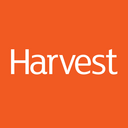1. Core Web Vitals – speed and other new tools
Core Web Vitals will be big in 2021. If you have not yet heard of Core Web Vitals, it is probably time to take the plunge into this technical SEO hot topic.
What are Core Web Vitals?
Core Web Vitals are essentially a set of metrics related to speed, responsiveness and visual stability. All three of these factors contribute to a good mobile user experience, so this is a key tactic for Google to promote best practices.
Last year, Google was recommending that webmasters focused on the download speed of mobile websites. So, you could get away with a site that downloaded quickly, even if there were problems with the way the page rendered. Now you need to focus on the entire user experience.
Core Web Vitals (metrics for which are now available in all Google tools & resources) were supposed to become a ranking factor in Q1 of 2020. However, due to Covid-
19, Google decided to postpone the implementation until May 2021.
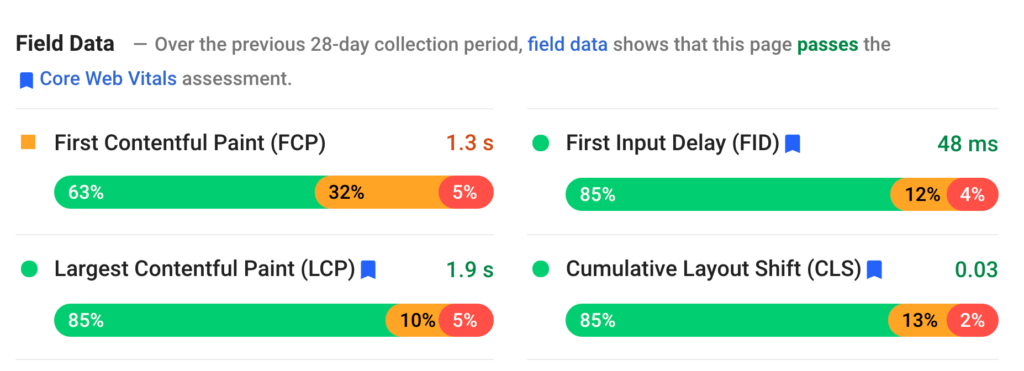
So, we have had plenty of time to get familiar with new acronyms like FID (First Input Delay), LCP (Largest Contentful Paint) and CLS (Cumulative Layout Shift) that are part of Core Web Vitals. (The last one of these is our favourite – it is a quick-win exercise, as it doesn’t take expert technical knowledge to spot and fix a layout shift problem.)
A great place to start is Google’s PageSpeed Insights, a tool that has been greatly improved. Within this you’ll be able re-run tests faster than anywhere else, as well as find what
Google considers the Largest Contentful Paint, alongside which on-page elements generate the largest layout shifts. PageSpeed Insights rely on your host location as well as your server speed index, so we recommend you run 4 tests at different times before calculating the marginal gains you obtained from adjusting your webpage.
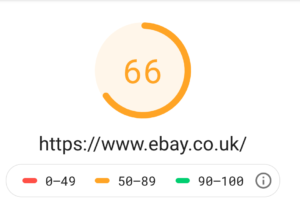
For CLS issues, try to look at your images without dimensions in the <img> HTML element. When Responsive Web Design was introduced, developers began to omit width and height and started using CSS to resize images instead. Today, modern browsers prefer being explicitly told of the width and height of an image, so they not only allocate the right amount of memory before the load, but also reserve the right space for that image to fit. This is a simple fix to avoid layout shifts.
2. The tech must go on
In 2021, sites with better technical SEO will perform better, as John Mueller pointed out. We are bordering on obsessed with our daily Search Console checks, as errors or warnings you find within this tool can reveal the most important structural issues of a website.
If you have never taken time to deep dive into Search Console Index Coverage, we strongly recommend doing this. It’s worth noting that one issue can be found through multiple categories here, so it’s best to fix issues by order of priorities and feasibility.
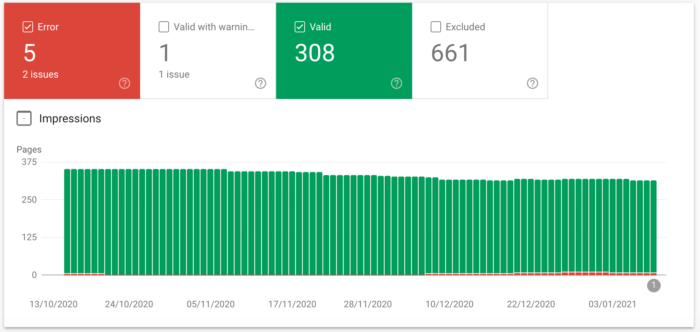
In essence, fixes you’ll make from Google Search Console will be very cost-efficient as they run on-site, in most scenarios. For instance, a quick win could be to fix a phone number link that hasn’t formed correctly on your site. A simple change on its HTML could help solving 1,000s of dead pages auto-generated by this link.
3. Structured data to please crawlers
An easy win (which is not new but is increasingly important) is to optimise and test your pages with Structured Data. The purpose here is to mark-up information on your pages so that search engines can better understand what the page is about and who it is serving.
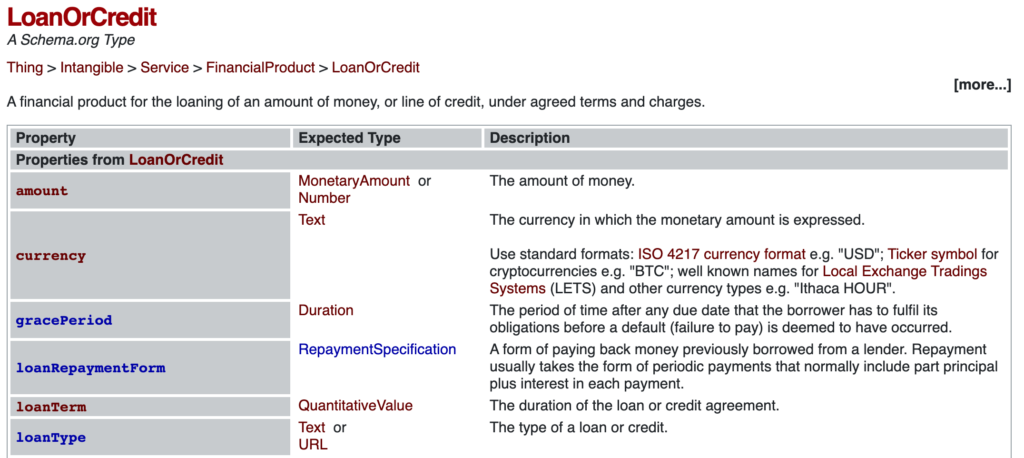
Have a look into the official schema.org website and find the schema mark-up that is designed for your industry. For instance, take the ‘LoanOrCredit’ Schema.org code if you are within this area of finance and inject that into your HTML. Seeing as it is extra data point for the bots to analyse, there’s nothing to lose in this technique.
4. Semantic search and SERP snippet opportunities
In 2019, Google announced BERT – a natural language processing capability that allows for a better understanding of queries within Google search. Using BERT, Google can better analyse the intent behind people’s queries and provide more relevant results for them. For website owners, this means the emphasis should be on writing content naturally and in plenty of depth around the topic of interest. We should focus on writing our content for people and not for the bots.
While only 10% of queries were powered by BERT in 2019, now almost 100% of English-language queries are powered by it. Seeing as we are already within the realm of this AI, if SEOs haven’t made semantic search a part of their strategy in 2020, then this should be the year to do it.
Next up: “micro text optimisation” will be key this year. Following a recent announcement from John Mueller, ‘passage indexing’ will be an important aspect to take into account in 2021.
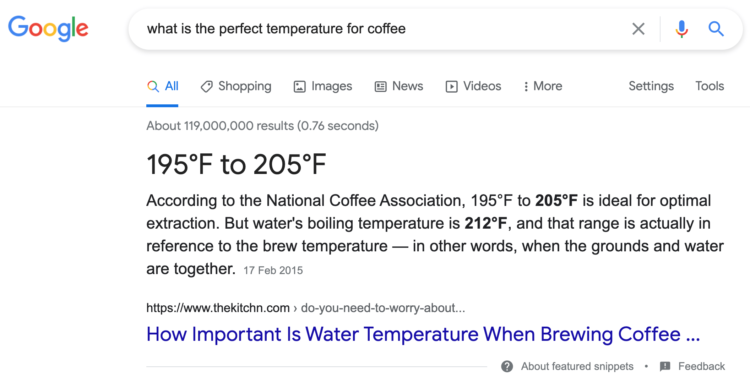
What is Passage indexing?
Passage indexing is a technique to improve Google’s ability to answer niche queries. In other words, using BERT and all its wonderful algorithmic understanding of natural language, Google shows in a featured snippet a section of text on a page that is most relevant to the person’s question. While this is not new, Google will continue to improve the relevancy of their featured snippets, based on intent of users’ queries.
5. User experience (UX) increasingly significant
User experience (UX) as a whole plays an increasingly important role in a website’s organic performance, which is why it is also a major theme in the Core Web Vitals metrics discussed above.
While traditional ranking factors are still very relevant to performance – links, content depth, page speed etc. – Google uses behavioural factors to determine whether the website is providing the experience the user was hoping for with their search. Factors such as dwell time on the page, bounce rate, the amount the person interacts with the page, pain-points such as broken links or elements of a page that do not function properly – these are all taken into account and Google makes a judgement on your website depending on these factors.
Keeping people on your website using good content, and minimising any reasons for them to leave abruptly, should form the basis of all your site optimisations this year.
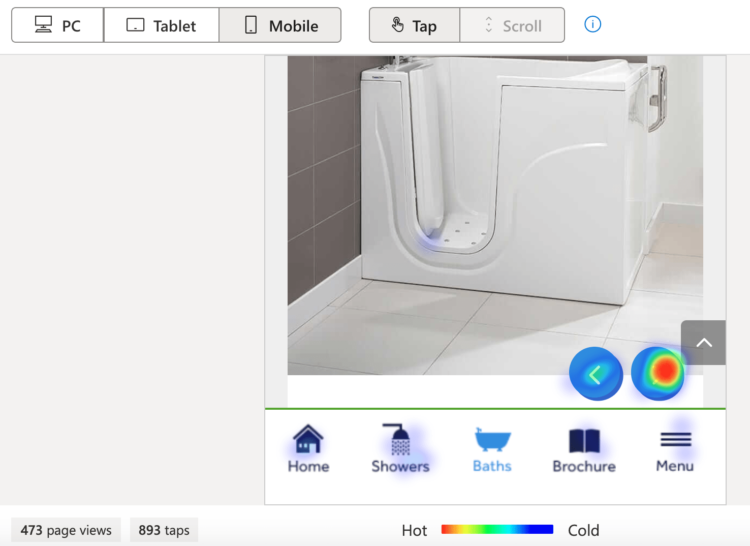
At Harvest, we have been using Microsoft Clarity, which has been extremely helpful for our clients. It’s a free tool from Microsoft that provides free heatmaps, session playbacks and other behaviour analytics that can unearth potential points of your website that are delivering a sub-optimal experience.
6. EATing up the competition
All websites are trying to be the authority on their subject matter. So, how to you push ahead of your competitors, who are also striving to be seen as the go-to brand in your space?
E-A-T has been much talked about in the SEO community since 2018. It stands for Expertise, Authority and Trustworthiness. While it’s nothing new to say that websites need to adhere to these principles to lead the way, we’re still finding lots of ways to improve our clients’ sites using these principles.
E-A-T is important for all businesses, but for some there are additional considerations. Anything related to YMYL (You Money Your Life – how Google refers to the businesses that can impact people’s ‘happiness, health, financial stability, or safety’) must make extra efforts in this area.
Whether you are a ‘YMYL’ brand or not, here are 4 simple ways to boost your overall Expertise, Authority and Trustworthiness:
Keep content fresh and 100% factual
Google likes articles that have been written or updated recently. A lot can happen since your 2008 article on ‘black hat SEO techniques and why they’re not effective’, so make sure your content is both up–to–date and factually watertight
Get more reviews and show them on your website
Google trusts people more than it does the website. If you have a good review score on your website, it’s likely that you’ll be favoured over a similarly performing brand that does not have them. Investing in Google reviews may also be a worthwhile exercise
Mention the expert or authority in your articles
Having the author shown in the article give both an authenticity and sense of expertise to the advice given, which both people and Google’s bots can pick up on
Boost authority from link-building
We’re well aware of how important links are in SEO, and they continue to be a strong sign of trust for Google. Build links to the homepage or to the individual webpages to receive an SEO boost.
We hope that our list will provide you with some insight into how you can knock it out the park this year with your organic performance! If you’d like to talk to Harvest Digital about improving your website’s performance in the search engines – please contact us here!
